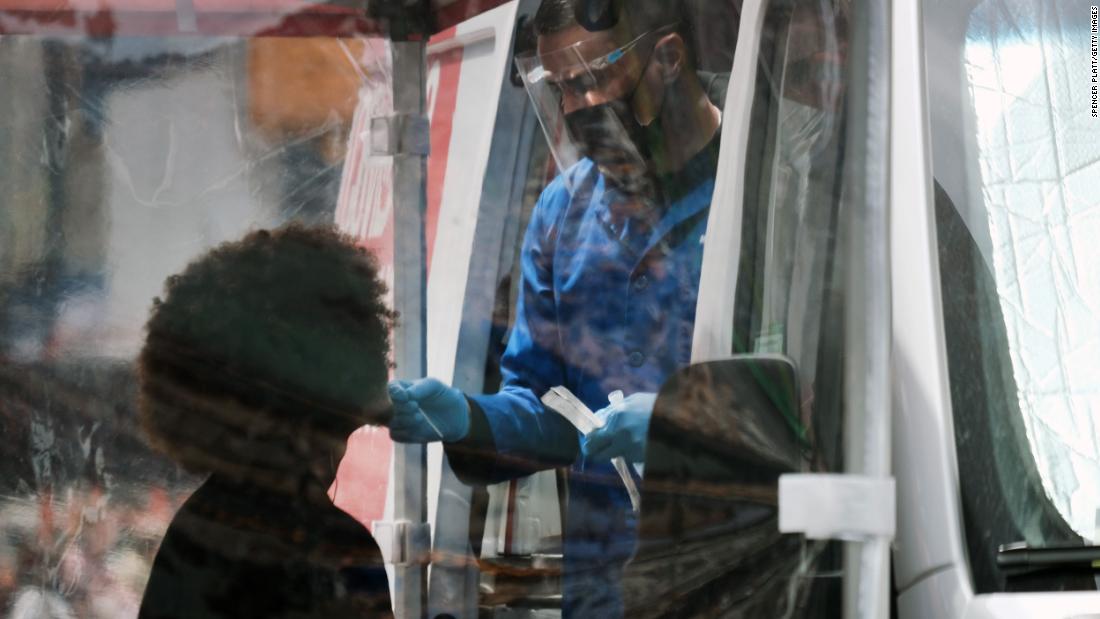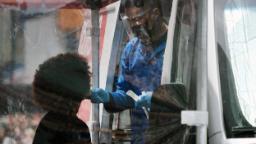Getting Covid-19 … again
But here’s an individual story for anyone coming to terms with the persistence of Covid-19 and a lesson that if you’ve had it, you can easily test positive again.
Late-night host Jimmy Kimmel did. And it’s wreaking havoc on his schedule just like infection does for school kids, teachers, service workers, office workers or anyone else who does the responsible thing and goes into isolation.
The news comes after he previously announced a positive test and guest hosts to fill in while he quarantined at home at the beginning of the month.
The lesson is that no, you are not exempt from Covid-19 awareness for 90 days after a positive test, since new variants are emerging and infection rates are rising in much of the country.
A surge in the Northeast
About a third of the US population is in an area with high or medium infection rates, according to a warning this week from the US Centers for Disease Control and Prevention.
The high-transmission areas at this moment are in the Northeast, particularly New York and New Jersey, and stretch over to Michigan and Wisconsin.
No new mask rules in New York
Despite the high community spread in New York City, Mayor Eric Adams said he has no plans to reinstate mask requirements there, suggesting we’ve got to learn to live with Covid-19.
Less than half of fully vaccinated Americans have received a booster dose, while about 38% of New Yorkers have.
Booster shots for kids
On the heels of the FDA’s authorization earlier this week, CDC vaccine advisers voted on Thursday to recommend a booster dose of the Pfizer/BioNTech vaccine for children ages 5 to 11. Walensky has signed off on the recommendation.
More free tests
The administration also called on Congress to authorize $22.5 billion in more spending for testing, treatment and vaccines, but the additional funding is opposed by many Republicans.
Boosters are saving lives
While the CDC recommends a booster shot for most Americans, the percentage of those who have received third shots is relatively low.
Why aren’t people getting boosters?
Szabo spoke with multiple researchers and experts who argued the federal government has not focused nearly enough on getting the word out about booster shots.
“The booster program has been botched from day one,” Dr. Eric Topol, founder and director of the Scripps Research Translational Institute, told her. “This is one of the most important issues for the American pandemic, and it has been mismanaged.”
Topol and other experts argued the federal government hasn’t taken a forceful enough role in coordinating and messaging the need for booster shots.
What should you do if you test positive?
Be careful
Wen: A more transmissible variant means that the activities we thought were relatively safe before are now higher risk. This doesn’t mean that we should avoid all activities, but rather that people who have been very careful before may be getting infected now because of how contagious this subvariant is.
5 days of isolation may feel more like 6 days
Wen: The day that you take your positive test is day zero. If you had symptoms before then, say the day before, that day is day zero — whichever is first. Day 1 is 24 hours after the positive test or appearance of symptoms.
You need to be isolated from others for five days. That means not being in the same room at home with people you live with and not going to work in person. If you have to share, say, a bathroom, make sure to wear a well-fitting N95, KN95 or KF94 while in these common areas, minimize your time in them, and open the windows as much as possible.
And after the 5th day …
Wen: The CDC says that after the fifth day of isolation, if you have no fever and your symptoms are improving, you can go into public spaces like grocery stores and to work and school, as long as you wear a well-fitting mask the entire time.
A lot of workplaces and schools have their own policies that are more stringent than this and may require, for example, a full 10 days before you return.
Do you need a negative test after 5 days?
Wen: Many public health experts, including me, would recommend testing out of isolation as an additional level of precaution that also reduces inconvenience.
This is not what the CDC says, but I think it’s reasonable to start testing with a home rapid test from day 5. If you test negative on day 5 and day 6, and you have no fever and improved symptoms, then you could exit isolation.
That would make for a less onerous isolation period, especially for families who live in small spaces or have young children to care for.








More News
Greene Moves to Oust Johnson, Teeing Up Another Historic Vote
An Inside Look at the Student Takeover of Columbia’s Hamilton Hall
Tornadoes Are Coming in Bunches. Scientists Are Trying to Figure Out Why.